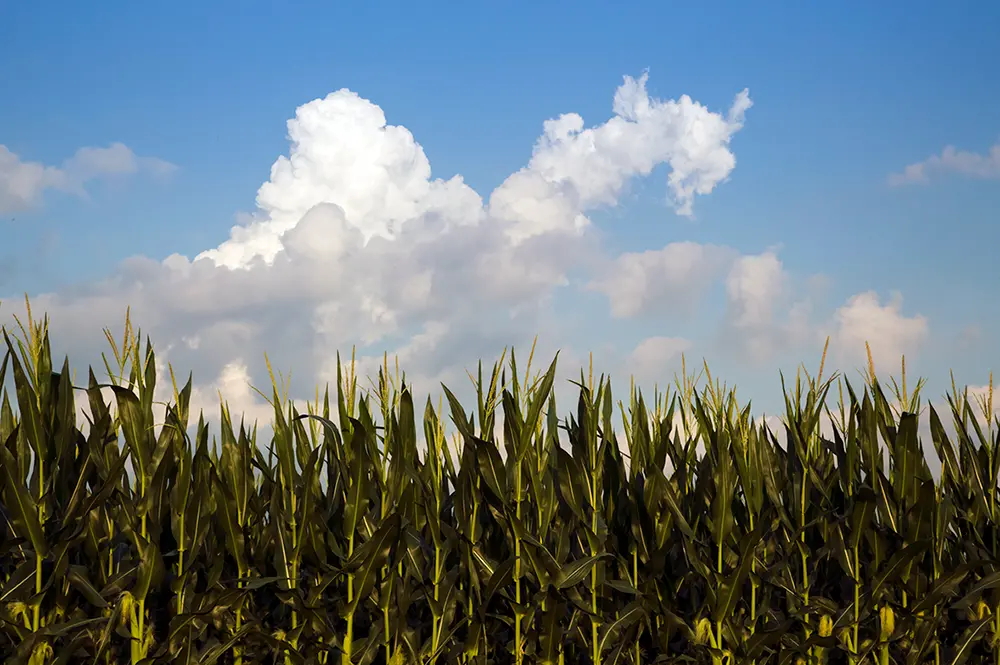

Researchers from several universities, led by a team at the University of Illinois, have found corn, or maize, yields to be very sensitive to extreme heat. In addition, they found that models used by the agriculture industry are ineffective at predicting the impact of extended periods of harsh conditions, and that more comprehensive forecasting is necessary to allow farmers to properly plan for adverse conditions.
“What we find from our analysis is that the likelihood of experiencing consecutive bad [crop] years is increasing,” said Ryan Sriver, professor of atmospheric sciences. “Every once in a while, you have a drought year, you have a hot year, or sometimes both. But what happens when you start to have multiple bad years consecutively? What type of effect is that going to have for farmers and crop production? We just don’t know.”
As a result of this uncertainty surrounding extreme temperatures, Sriver added, there are large uncertainties in future corn projections that use these climate models and data products. Furthermore, negative shocks to annual yields may become more common and severe than previously considered.
There are ways that those in the agriculture industry could prepare for changes in climate. Sriver said some farmers add more irrigation to mitigate excess heat, meanwhile the threat of increased flooding sees people adding additional drainage systems. Accurate climate models and data products are needed to make these critical decisions.

As a result, the past decade has seen a greater emphasis on understanding the effects of climate change on human systems. Graduate research assistant David Lafferty said extreme temperatures could have effects on human health, infrastructure and energy sectors, in addition to other crops including soy, wheat, alfalfa, rice, and cotton.
“We really wanted to understand how well we can simulate future temperature extremes,” Lafferty said, “And one way to do that is to look at how well climate models represent the current and past climate, including current and past extremes.”
They found significant differences between the sets of climate models and how they simulate extreme temperatures. Sriver said models originating from CMIP5, an international collection of state-of-the-art global climate models used for climate change assessment, tend to be low resolution. The models provide a zoomed-out view of climate that doesn’t offer much detail on a state or even regional level.
Lafferty said these “parent models” from CMIP5 overestimate extreme heat, and as a result overestimate changes in crop yields. To correct overestimations and the lack of detail, researchers use various bias correction and downscaling techniques to create adjusted models.
The process is “almost like nudging the models to look more like reality,” Sriver said. But the adjusted models have problems of their own.
“If we're constraining climate models to look like present day reality, how can we really use those same models to understand how future climate may change?” Sriver said, “The models themselves have errors. But if we try to correct the errors, then we no longer have a reliable projection of how those variables may change in the future. In a sense, these corrections make the future look more like today and limit our ability to diagnose potential changes, particularly for extreme conditions.”
According to the team’s research, the bias-corrected and down-scaled models underestimate the damage that could be done by extreme heat. This means there are large uncertainties in the future impacts of climate change. To combat the uncertainties, Sriver says, it will be crucial to use several models to collect data that is “greater than their original parts.”
The other option would be creating more accurate models, but Sriver said that’s more of a philosophical question. Due to the complexity of the earth's systems and the amount of processes that take place in the atmosphere, the perfect model doesn't exist yet.
“The impacts of climate change are being felt now, this is no longer something that we're projecting decades into the future,” Sriver said, “We're trying to get an understanding of what drives these extremes, how are they changing, and how are they going to continue to change in the future.”


